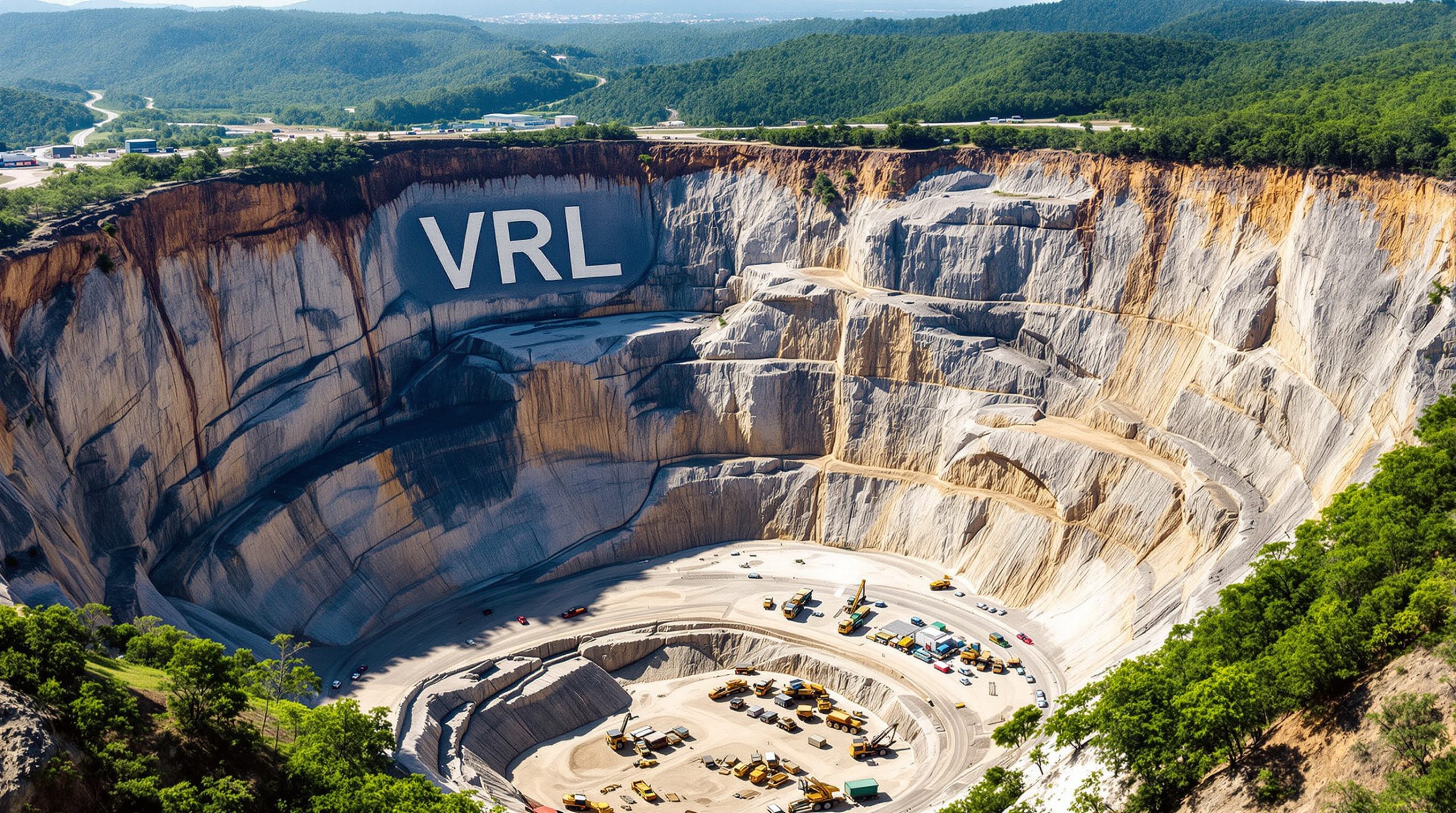Lodestar Minerals Reports Initial Results from Chile IOCG Project Drilling
Lodestar Minerals (ASX: LSR) has announced the first batch of assay results from its maiden drilling programme at the highly prospective Darwin Iron Oxide Copper Gold (IOCG) project in Chile. The drilling has confirmed the presence of IOCG-style mineralisation, though initial grades suggest drilling may have intersected the periphery of the main target.
Drilling Confirms IOCG Potential with Peripheral Intercepts
The company has completed 16 reverse circulation (RC) holes totalling 2,026 metres across three separate target areas within the 58 km² Darwin Project, located 75km south of Copiapó in northern Chile. With 354 priority sample assays returned and 474 still pending, the initial results have provided valuable geological insights despite not delivering the high grades anticipated from earlier surface sampling.
Significant intercepts reported include:
- 2m @ 0.48 g/t Au & 0.51% Cu from 30m in LDARC007
- 1m @ 0.68 g/t Au from 35m in LDARC010
- 1m @ 0.30 g/t Au & 0.14% Cu from 54m in LDARC015
- 1m @ 0.43 g/t Au from 14m in LDARC016
"This first batch of results that were prioritised for this drilling did not deliver the results we expected following the highly successful rock chip sampling, but importantly we have learnt a lot geologically which is important for future exploration work. Multiple quartz veins, which were not observed at surface, were intersected in numerous holes, and the alteration assemblage present in IOCG deposits was also observed in many holes. This gives us encouragement that at Darwin we may have a significant mineralised system, as yet undiscovered, particularly in relation to the southern IOCG targeted holes that are possibly 'near misses'." – Lodestar Managing Director Ed Turner
Understanding IOCG Deposits: Why Geology Matters More Than Initial Grades
IOCG (Iron Oxide Copper Gold) deposits represent major exploration targets globally due to their potential for large tonnage and high-grade mineralisation. Unlike porphyry copper deposits, IOCG systems can be structurally complex with mineralisation often controlled by faults, breccias, and alteration zones.
The alteration assemblage identified in Lodestar's drilling (chlorite, epidote, pyrite, calcite) is typically associated with propylitic alteration characteristic of the peripheral zones of IOCG systems. This suggests the company may have drilled the outer edges of a potentially larger mineralised system.
IOCG deposits often show zonation, with the highest-grade copper and gold mineralisation concentrated in specific structural corridors or breccia zones. The identification of multiple generations of dykes with magnetite content helps explain the magnetic anomalies targeted and provides vectors toward the potential core of the system.
Expanded Exploration Focus Following New Geological Insights
The Darwin Project is strategically located within one of the world's largest IOCG belts, which includes the 1.2 billion tonne Candelaria Deposit (0.60% Cu, 0.13 g/t Au). The region hosts numerous world-class copper deposits and gold-rich IOCG deposits, including Carola (10Mt @ 1.8% Cu, 0.5g/t Au) and Atacama Kozan (50Mt @ 1.6% Cu, 0.35g/t Au).
Based on the initial drilling and subsequent geological mapping, Lodestar has identified several new prospective areas within both the Darwin Project and the adjacent Three Saints Project. The company has expanded its target focus to include:
- IOCG-type deposits beneath the drilled areas
- Newly identified porphyry-type targets within the project area
The drilling has confirmed the continuity at depth of mineralised structures, with historical workings extending to more than 100m depth, suggesting good potential for mineralisation to extend at depth.
Next Steps: Geophysics, Geochemistry and Follow-up Drilling
Lodestar has outlined a systematic exploration plan to advance the project:
- Additional airborne magnetics to cover areas lacking detailed surveys and help identify the centre of targets that appear to have been near misses in the current drilling
- Ground geochemistry to gather information and focus the next phase of drilling
- Systematic exploration across newly identified prospective areas using geophysical surveys and geochemical analysis to study alteration assemblages typical of IOCG and porphyry deposits
- Re-assays and cross lab checks to confirm that gold grades in observed veins that did not report significant gold mineralisation are accurate
The company noted that most of the tenement area is under cover, which presents an opportunity to discover previously unidentified deposits at depth.
Investment Potential: Early Stage but Promising Geological Setting
Lodestar Minerals represents an early-stage exploration opportunity in one of the world's premier copper-gold belts. While initial grades from the first drilling programme were modest, the confirmation of IOCG-style alteration and mineralisation in a region known for world-class deposits provides a solid foundation for ongoing exploration.
The company's expanded exploration focus to include both IOCG and porphyry targets increases the discovery potential across its Chilean land package. With only a small portion of the project area tested to date and much of the remainder under cover, systematic exploration has the potential to identify significant mineralisation.
Investors should note that Lodestar maintains a diversified portfolio beyond Chile, with the 100% owned Earaheedy and Ned's Creek projects in Western Australia, plus exposure to lithium via 27.5 million performance rights in Future Battery Minerals (ASX:FBM).
Key Takeaway:
Lodestar Minerals has established a foothold in Chile's premier IOCG belt with confirmed mineralisation and alteration at its Darwin Project. While initial grades suggest drilling intersected the periphery of potential targets, the geological setting, alteration patterns, and structural controls identified provide vectors toward potentially larger mineralised systems. With multiple exploration targets identified and a systematic approach to testing them, Lodestar offers investors exposure to discovery potential in one of the world's most productive copper-gold regions.
Want to Know More About Lodestar's Chile IOCG Project?
Lodestar Minerals' initial drilling results from their Darwin project in Chile have confirmed IOCG-style mineralisation in a world-class copper-gold belt. While early assays suggest drilling intersected the periphery of potential targets, the geological indicators point to promising exploration potential. To learn more about Lodestar's systematic exploration plans and investment opportunity in this premier mining jurisdiction, visit their website for detailed information and the latest updates.




